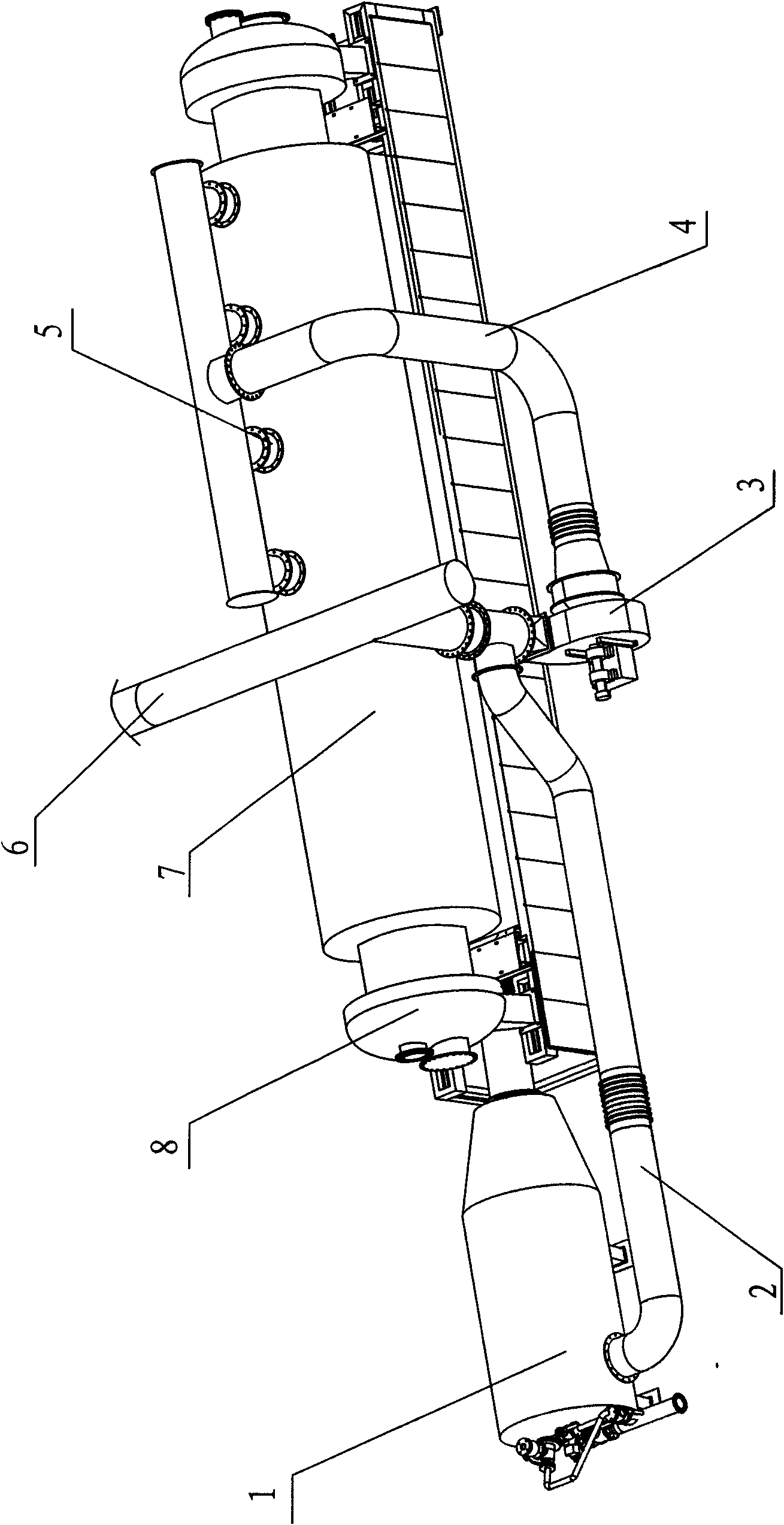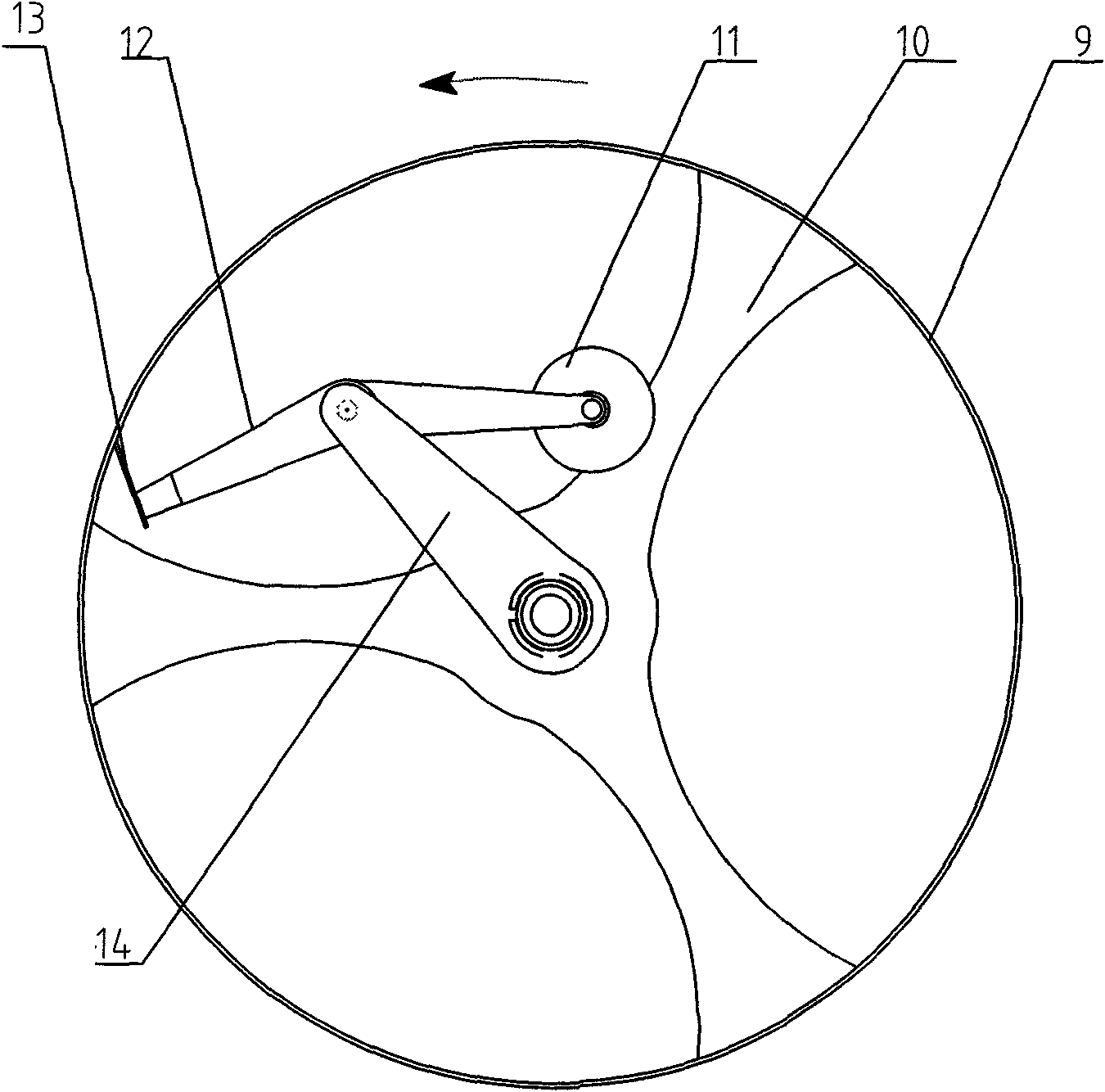Anti-coking process of oiling device and automatic decoking device
An anti-coking and process technology, which is applied in the field of anti-coking technology, can solve the problems of affecting materials, multiple raw materials and energy, and increased fuel consumption, so as to solve the coking problem, ensure the service life and reduce the burden.
- Summary
- Abstract
- Description
- Claims
- Application Information
AI Technical Summary
Problems solved by technology
Method used
Image
Examples
Embodiment 1
[0027] An anti-coking process, the hot air discharged from the cracker is directly transported to the hot air inlet of the cracker through the pipeline, mixed with the high-temperature hot air to be sent into the cracker before entering the cracker, and then enters the hot air chamber of the cracker. After measurement, the temperature of the hot air discharged from the cracker is 410-420°C, and the temperature at the air outlet of the heater (before mixing) is 1200°C. After mixing, the temperature of the hot air acting on the inner wall of the cracker is 500-550°C. The outlet temperature is 380-400°C. The coking phenomenon on the inner wall of the cracker has been improved.
Embodiment 2
[0029] An anti-coking process, the hot air discharged from the cracker is directly sent to the heat recovery fan through the pipeline, and the air volume is increased by the heat recovery fan, and then sent to the hot air inlet of the cracker, and the high temperature hot air that is about to be sent to the cracker is sent to the cracker before entering the cracker. After mixing, it enters the hot air chamber of the cracker. After measurement, the temperature of the hot air discharged from the cracker is 415-420°C, and the temperature of the hot air at the air outlet of the heater is 1300°C. After the air volume is increased by the reheating fan and mixed, the temperature of the hot air acting on the inner wall of the cracker is 520- 540°C, the oil and gas outlet temperature of the cracker is 380-400°C. The coking phenomenon on the inner wall of the cracker has been improved.
Embodiment 3
[0031] An anti-coking process, the temperature of each hot air outlet of the cracker is measured by the temperature control device, the air volume of each air outlet is adjusted by the air control valve, the hot air discharged from each air outlet is mixed through the pipeline, and then directly sent to the heat recovery fan, and passed through the air return The hot air blower increases the air volume and sends it to the hot air inlet of the cracker, and mixes with the high-temperature hot air to be sent into the cracker in the air mixing chamber before entering the cracker, and then enters the hot air chamber of the cracker. After measurement, the temperature of the hot air discharged from the cracker is 400-410°C, and the temperature of the hot air at the air outlet of the heater is 1270°C. After the air volume is increased by the heat recovery fan, the ratio of the hot air discharged from the cracker to the high-temperature hot air that will be sent to the cracker After mix...
PUM
 Login to View More
Login to View More Abstract
Description
Claims
Application Information
 Login to View More
Login to View More - R&D
- Intellectual Property
- Life Sciences
- Materials
- Tech Scout
- Unparalleled Data Quality
- Higher Quality Content
- 60% Fewer Hallucinations
Browse by: Latest US Patents, China's latest patents, Technical Efficacy Thesaurus, Application Domain, Technology Topic, Popular Technical Reports.
© 2025 PatSnap. All rights reserved.Legal|Privacy policy|Modern Slavery Act Transparency Statement|Sitemap|About US| Contact US: help@patsnap.com


